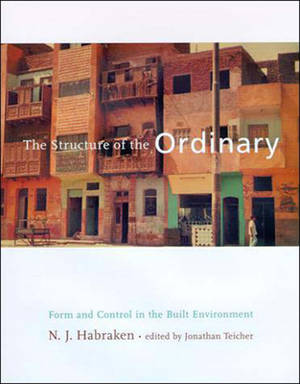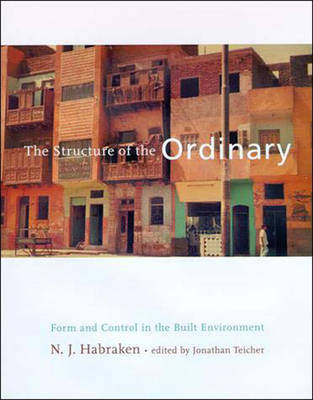
- Retrait gratuit dans votre magasin Club
- 7.000.000 titres dans notre catalogue
- Payer en toute sécurité
- Toujours un magasin près de chez vous
- Retrait gratuit dans votre magasin Club
- 7.000.000 titres dans notre catalogue
- Payer en toute sécurité
- Toujours un magasin près de chez vous
Description
According to N. J. Habraken, intimate and unceasing interaction between people and the forms they inhabit uniquely defines built environment. The Structure of the Ordinary, the culmination of decades of environmental observation and design research, is a recognition and analysis of everyday environment as the wellspring of urban design and formal architecture. The author's central argument is that built environment is universally organized by the Orders of Form, Place, and Understanding. These three fundamental, interwoven principles correspond roughly to physical, biological, and social domains.
Historically, "ordinary" environment was the background against which architects built the "extraordinary." Drawing upon extensive examples from archaeological and contemporary sites worldwide, the author illustrates profound recent shifts in the structure of everyday environment. One effect of these transformations, Habraken argues, has been the loss of implicit common understanding that previously enabled architects to formally enhance and innovate while still maintaining environmental coherence. Consequently, architects must now undertake a study of the ordinary as the fertile common ground in which form- and place-making are rooted. In focusing on built environment as an autonomous entity distinct from the societies and natural environments that jointly create it, this book lays the foundation for a new dialogue on methodology and pedagogy, in support of a more informed approach to professional intervention.
Spécifications
Parties prenantes
- Auteur(s) :
- Editeur:
Contenu
- Nombre de pages :
- 382
- Langue:
- Anglais
- Collection :
Caractéristiques
- EAN:
- 9780262581950
- Date de parution :
- 25-08-00
- Format:
- Livre broché
- Format numérique:
- Trade paperback (VS)
- Dimensions :
- 188 mm x 267 mm
- Poids :
- 1043 g







